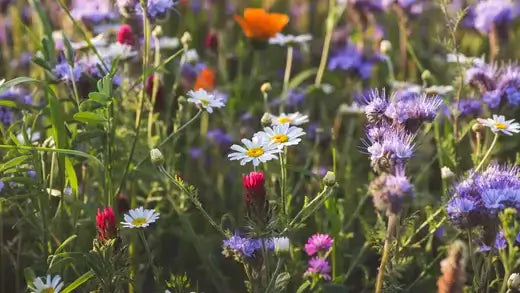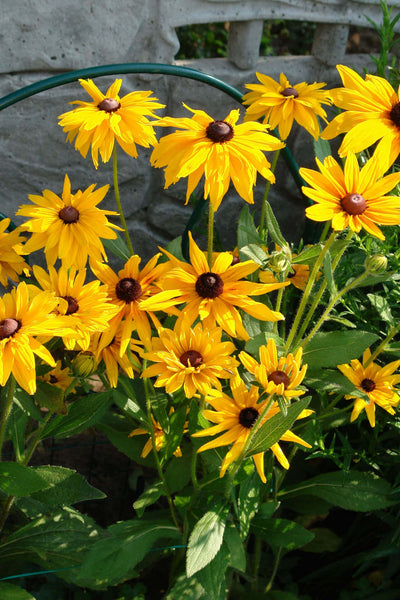The Importance of Native Plants in Landscaping
Landscaping is more than just arranging plants and elements in an aesthetically pleasing manner; it also plays a critical role in environmental sustainability, biodiversity conservation, and ecosystem health. Native plants, naturally occurring in a specific region without human intervention, have gained increasing attention in landscaping due to their numerous benefits. In this article, we will delve into why native plants are essential and explore practical ways to incorporate them into your landscaping projects.
1. Biodiversity Preservation Native plants are vital to local ecosystems, providing habitat and sustenance for native insects, birds, mammals, and other wildlife. These plants have evolved alongside their native animals, leading to intricate relationships essential for biodiversity preservation. In contrast, introducing non-native species can disrupt these relationships, leading to imbalances and potentially endangering native species. Landscaping with native plants promotes a healthy ecosystem by giving food and shelter to local wildlife. By planting native species, you contribute to the overall biodiversity of your area, ensuring that native animals can find the resources they need to thrive.
2. Water Conservation Native plants do well to the local climate and soil conditions, often requiring less water than non-native species once established. This is particularly important in regions facing water scarcity or drought conditions. By incorporating native plants, you can reduce your water consumption. On the other hand, non-native plants might demand more water and care to survive, leading to increased water usage and potentially straining local water resources. Choosing native plants helps create landscapes that are resilient to changing weather patterns and require less irrigation.
3. Soil Health Native plants have a relationship with the local soil, benefiting from and contributing to its health. Their root systems prevent erosion, improve soil structure, and enhance nutrient cycling. When non-native plants are introduced, they interact less effectively with the local soil biology, potentially degrading soil quality over time. Incorporating native plants into your landscaping can promote healthy soil ecosystems, reducing the need for fertilizers and other soil amendments. This creates a self-sustaining environment where plants can thrive without excessive human intervention.
4. Low Maintenance Native plants are adapted to the environment, making them more resistant to pests and diseases. This adaptability often results in lower maintenance requirements, as they are already equipped to deal with the challenges of the region's climate and conditions. This can save both time and money in terms of upkeep. In contrast, non-native plants might require more attention to prevent or mitigate pest infestations and diseases, increasing pesticide and herbicide usage. By using native plants, you create landscapes that are not only environmentally friendly but also easier to maintain.
Cultural and Aesthetic Value Native Of Plants
5. Cultural and Aesthetic Value Native plants hold cultural significance and historical value for indigenous communities and local cultures. Incorporating these plants in your landscaping can help preserve and honor these traditions. Additionally, native plants can offer a unique aesthetic appeal that reflects the region's natural beauty. They create a sense of place, connecting your landscape design to the broader environment and history of the area. Using Native Plants in Landscaping Now that we've explored the importance of native plants in landscaping let's delve into how you can effectively use them in your projects.
1. Research Your Region Start by searching for native plants that are indigenous to your region. Local gardening clubs, botanic gardens, and native plant societies can be valuable resources for information on native species that thrive in your area.
2. Design with Purpose Before planting, create a design that incorporates native plants thoughtfully and intentionally. Consider the needs of local wildlife, the desired aesthetic, and the functional aspects of your landscape. Native plants can create diverse habitats, such as meadows, pollinators, and rain gardens.
3. Choose a Variety of Species Diversity is critical to a healthy ecosystem. Choose a variety of native plant species to create a balanced and resilient landscape. Aim for a mix of trees, shrubs, grasses, and flowers that provide food, shelter, and nesting sites for different wildlife species.
4. Group Plants by Water Needs When designing your landscape, group plants with similar water requirements together. This practice, known as hydrozoning, helps ensure that plants receive the proper amount of water. It also prevents overwatering or underwatering certain areas.
5. Consider Seasonal Interest Select native plants that offer visual interest throughout the seasons. This can include blooming spring and summer flowers, vibrant fall foliage, and structural elements like seed heads and bark in winter. A well-planned native landscape will have something captivating to offer year-round.
6. Mulching and Maintenance Apply mulch around your native plants to retain moisture, suppress weeds, and improve soil health. Proper maintenance, such as pruning and removing dead foliage, will keep your landscape looking its best while mimicking natural processes.
7. Patience and Long-Term Vision It's important to note that native landscapes may take some time to establish fully. Be patient and have a long-term vision for your landscape's growth and development. Over time, native plants will become hardier and more self-sufficient, requiring less intervention.
Here are ten native plants that are beneficial for the environment:
Milkweed (Asclepias spp.): Vital for monarch butterflies, milkweed serves as a host plant for their caterpillars and provides nectar for adult butterflies.
Bee Balm (Monarda spp.): Loved by pollinators, bee balm's vibrant flowers attract bees, butterflies, and hummingbirds while adding color to your landscape.
Black-Eyed Susan (Rudbeckia spp.): These cheerful yellow flowers are pollinator magnets and are great for naturalizing areas.
Eastern Redbud (Cercis canadensis): This ornamental tree boasts pinkish-purple flowers, providing nectar for early pollinators and adding beauty to gardens.
Switchgrass (Panicum virgatum): A native grass that aids soil erosion control, covers wildlife and adds texture to landscapes.
Virginia Bluebells (Mertensia virginica): These bell-shaped blooms flourish in woodland settings and offer early-season nectar for bees.
Serviceberry (Amelanchier spp.): Also known as Juneberry, this tree provides food for birds and pollinators with its berries and early spring flowers.
Goldenrod (Solidago spp.): Often wrongly accused of causing allergies, goldenrod is a vital late-season nectar source for bees and butterflies.
Oak Trees (Quercus spp.): Hosting countless insect species, oaks are ecological powerhouses that support food chains and contribute to forest health.
Columbine (Aquilegia spp.): These unique flowers attract hummingbirds and other pollinators, thriving in shaded woodland gardens.
Incorporating these native plants into your landscaping can foster a healthier ecosystem and offer a haven for local wildlife.
Conclusion Incorporating native plants into your landscaping enhances the beauty of your outdoor space and contributes to the environment's well-being. From preserving biodiversity to conserving water and promoting healthy soils, the benefits of using native plants are far-reaching. By taking the time to research your region, design with purpose, and choose a variety of species, you can create a landscape that supports local ecosystems and brings a sense of natural wonder to your surroundings. Remember, every native plant you introduce is a step towards a more sustainable and vibrant landscape.


